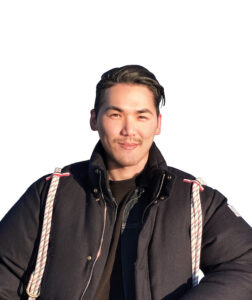
Sheng Wei Yang
IDA 2022 Emerging Interior Designer of the Year
Tell us about your definition of design?
Design is a process to capture the imagination.
What do you see as the strengths of your winning project ‘Moncler Soho’ and what does this IDA award mean to you personally?
This accomplishment is a significant milestone in my life. I think the strength of the winning project (Moncler Soho) successfully translates the extreme weather conditions and adventurous spirit with interior design language aesthetically and functionally.
Can you explain what was most important for you when planning the Moncler Soho’ project and what were the biggest challenges you faced?
The most important aspect about planning the project was to have a good amount of relevant data, which includes the site background, historical references, schematic inspiration and design detail inspiration. The challenge is then to narrow down the ideas and choose one that matches the story you want to tell.
Do you see design an expression of art?
Yes, I totally agree! And not only is design an expression of art but it’s also a great storytelling opportunity.
Tell us a little about your background. How did you develop a passion for design?
I’m originally from Taiwan, and I majored in Biomedicine, which is a totally different field of study from the design industry. During my four years in college, I participated in student associations and had different opportunities to take part in school theatre and student film production projects. As soon as I jumped into those projects, I realized that design (Film, Art, Custom design, Set design) was my destiny and passion.
Where does your motivation and inspiration from for your work come from?
Most of my motivation and inspiration comes from travel experience, local culture, history and architecture. ‘Moncler Soho’ was inspired from my first snowboarding trip in Hunter Mountain. I think it captures the wonderful and unique experience through the program and space planning, materials and detail.
Is there something [a building/logo/product] that you wished you had designed?
I always admired Mies Van Der Rohe, and so I’m inspired by his aesthetic and his design approach to nature. I hope there is a time in my life that I could design my own “Glass House”.
Tell us about a project which has been your greatest achievement?
I would say that it was my thesis project at school, “The Museum of Fashion Design and Technology”. It’s the project that showcases myself, from different perspectives.
How do you feel design has evolved over the past years and how do you see it evolving in the future?
I think over the past few years, design has become more inclusive. And it’s also more about a “place” not just a “space”. A destination where people will dream of and remain. After Covid, a lot of interiors spaces work to achieve a ‘residential feel’. A hotel, work space even hospitals want to create this “home” feeling. There’s nothing better than home. I believe that wellness will be one of the goals in future design.
What would be your dream design project?
I’m really interested by reuse and adaptive projects. My dream would be to turn an abandoned space into a place where people will gather and bring life back to abandoned areas and communities.
What’s your creative process and what creative software do you use?
When a new project comes in, I always start with site research. What’s the history and culture behind the site? What local materials and architectural languages can be plugged into the design? And then I develop the ingredients I have into creating the project. In terms of creative software I use an Ipad, Procreate, Mental Canvas, Adobe Suite, Sketchup, Revit, Enscape, hand sketching and photography.
How do you deal with feedback?
I always take the feedback positively no matter whether it’s good or bad. It can always be helpful for upcoming projects.